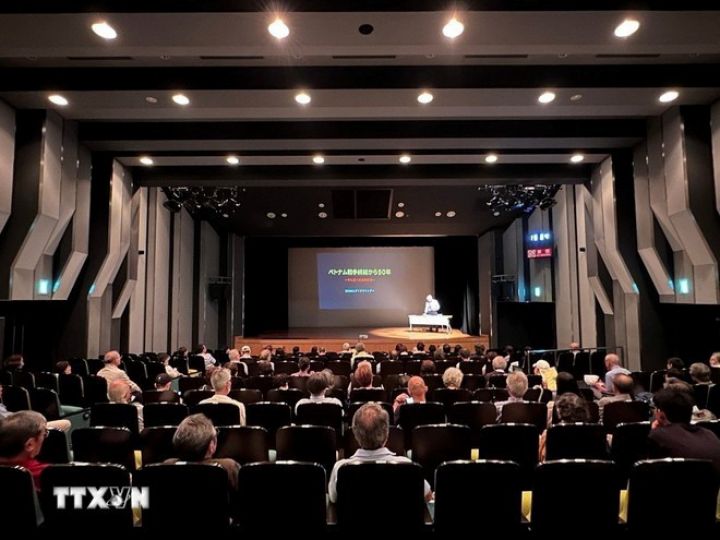2. CONTENT
2.1. Serum screening
Serological screening for aneuploidy combines the baseline risk factors and biochemical indices of the pregnant woman to calculate the risk of aneuploidy. Background risk factors in pregnant women include age, weight, race, etc. The two basic aneuploidy screening serological tests include:
- Double-test in the first trimester and triple test in the second trimester of pregnancy. Double-test performed at gestational age 11 weeks to 13 weeks and 6 -hCG (synthesizeddays, based on 2 maternal serum factors: PAPP-A and free from culture syncytium), combined with ultrasound skin translucency nape, called the combined test. The combined test is capable of detecting 85-90% of trisomy 21.
Triple-test includes 3 serum factors hCG, AFP and uE3 (unconjugated estradiol). The time to apply screening can be at weeks 15-22 (ideally at weeks 16-18). When AFP increases, it is necessary to investigate fetal abnormalities such as umbilical hernia, neural tube defects. For aneuploidy groups such as trisomy 21 and trisomy 18, AFP levels are lower than normal. The interaction process between the enzyme system of the adrenal gland, the fetal liver and the placenta synthesizes uE3. In the group of fetuses trisomy 21 and trisomy 18, uE3 levels were lower than in other normal fetuses. Compared with double-test, triple-test has the ability to detect 50-70% of trisomy 21, so the diagnosis of trisomy 21 becomes later.
 |
2.2. Non-invasive prenatal screening (NIPS)
The aneuploidy screening uses free fragments of DNA in the maternal circulation, from 9 to 10 weeks of gestation. Free DNA is derived from placental trophoblasts, programmed to die, and released into the maternal circulation. The percentage of free fetal DNA in maternal serum, known as the fetal DNA fraction, accounts for about 3 to 13% of the total free DNA in maternal blood. Some factors affecting fetal DNA fraction include: gestational age, maternal BMI, maternal drug use, race, aneuploidy, mosaicism in the mother or fetus, single or multiple pregnancies. The fatter the mother, the lower the fetal DNA fraction. According to gestational age, the fraction of fetal DNA decreases in the order of 3 groups: trisomy 21, normal fetus and trisomy group 13, 18. Free DNA screening is not recommended for transplant patients by sex. Organ donation may affect fetal sex screening results. With a false positive rate of 0.13%, the detection rate of trisomy 21, 18, 13 through free DNA screening is>99%, 98%, 99%, respectively (only in test samples that give results). fruit). The group of patients with no-call test results had an increased risk of chromosomal abnormalities. Trisomy 13 is a rare abnormality, the number of cases to synthesize is small, so the reported detection rate of trisomy 13 ranges from 40 - 100% in each individual study, with a false positive rate from 0% - 0.25%. Due to the small sample size, the detection rate of sex aneuploidy of free DNA screening has not been evaluated yet. Screening has the most sensitivity and specificity for common aneuploidies, but this is still only a false-negative, false-positive screening result, and especially not equivalent to a diagnostic test. Basic ultrasound prior to free DNA screening can detect a number of features early that affect the timing of screening, relevancy, and interpretability of test results. Ultrasound is used to evaluate factors such as: earlier gestational age, fetal survival, number of fetuses, a vanishing twin, empty gestational sac, fetal malformation. For malformations, patients should receive genetic counseling and diagnostic testing instead of genetic screening. For patients with 1 ectopic pregnancy and 1 live fetus in utero, free DNA screening is not recommended because of the high risk of gestational sac/embryonic aneuploidies leading to false positives. Today, NIPS is mainly applied in detecting common aneuploidies such as trisomy 21, trisomy 18 and trisomy 13; sex chromosome abnormalities (Turner syndrome, Klinefelter syndrome). In addition, with the advancement of testing technology, NIPS can investigate some common chromosomal deletions that cause birth defects such as deletion 22q11 (Di George syndrome), deletion 15q11 (Angleman/Prader). -Willi), loss of segment 1p36, 4p- (Wolf-Hirschlom), loss of segment 5p- (Cri-du-chat). However, widespread application has not been considered because the effectiveness of screening depends on the frequency of the disease circulating in the population.
2.3. Invasive diagnosis
The recommendation for diagnostic testing may be based on the results of high-risk screening tests, abnormal fetal ultrasound, a history of birth with a genetic abnormality, or may be based on the needs of the pregnant woman due to psychological concerns. settle. After the pregnant woman understands the benefits - risks, agrees on a written commitment to set and can proceed to invasive diagnosis. Currently, it is mainly clinical to perform invasive tests such as chorionic villus sampling, amniocentesis, and umbilical cord blood puncture.
2.3.1 Chorionic villus biopsies
A chorionic villus biopsy is a procedure to remove chorionic villus cells to examine the genetic material of the fetus. Most fetal and placental genetics are similar, and some cases of fetal and placental chromosomal mismatches are referred to as mosaicism. A chorionic villus biopsies should be performed after the 10th week of pregnancy through the abdomen or vaginally, depending on the placental position and the physician's experience. In Vietnam, the majority of chorionic villus biopsies are performed through the abdomen. A chorionic villus biopsy should not be performed 10 weeks before pregnancy due to the risk of pregnancy loss, amputation, and mandibular hypoplasia. Studies have shown that the pregnancy loss rate with chorionic villus sampling is about 0.2-2% and is similar when performed vaginally or abdominally. The rate of vaginal bleeding after chorionic villus biopsies accounts for about 10%. The risk of bleeding is increased by up to 30% when performed vaginally compared with abdominal surgery. The risk of amniotic fluid leakage is very low (<0.5%) and the risk of chorioamnionitis amniotic infection is even lower (1-2 />000) after chorionic villus biopsies. Several factors increase the risk of miscarriage after chorionic villus sampling, such as: African-American mother, repeat procedure more than 2 times, heavy bleeding, mother<25 years old or<10 weeks gestation. increased nuchal translucency, low papp-a levels are also factors that increase the risk of pregnancy loss after procedure< />>
2.3.2 Amniocentesis
Amniocentesis is a procedure in which a needle is passed through the abdomen under the guidance of ultrasound, to remove amniotic fluid from the uterine cavity through which tests to make a definitive diagnosis. Unlike chorionic villus sampling, amniocentesis removes cells from the fetus, thereby significantly reducing the incidence of placental incompatibility. The procedure is performed after 15 weeks to ensure a sufficient number of genetic examination cells. To limit maternal cell contamination in the amniotic fluid, remove the first 2mL of amniotic fluid, limit the number of needles, and avoid cross-placementation. Amniotic fluid mixed with blood increases the risk of culture failure. The cell culture failure rate is about 0.1%. Mosaic may be seen in 0.25% of cases. In these cases genetic counseling is needed, combined with results may indicate cord blood collection to rule out true mosaicism. The risk of pregnancy loss after amniocentesis ranges from 0.1-1%. Increased risk of pregnancy loss in the case of fetal malformations, the number of needles many times (>=3 times), the capacity of the person performing the procedure. The majority of studies reporting pregnancy loss rates are based on observational studies. A randomized controlled study of 4606 low-risk pregnant women in Denmark (1986) comparing pregnancy outcomes in the amniocentesis and follow-up groups. The pregnancy loss rate was 1.7% and 0.7%, respectively. Therefore, the risk of pregnancy loss increased by 1% in the amniocentesis group. In another meta-analysis, the pregnancy loss rate after amniocentesis was 0.11%. The rate of amniotic fluid leakage after amniocentesis is about 1-2%, but often the amniotic membrane closes by itself, so the risk of pregnancy loss is lower than in the group of spontaneous rupture of membranes. Other complications are very rare such as infection of the amniotic fluid, damage to maternal and fetal organs. In addition, some risk factors increase the rate of complications, although not yet agreed: uterine fibroids, uterine metamorphosis, unmerged amniotic membranes, subchorionic hematoma, obesity (BMI>40 kg) /m2), vaginitis, history of miscarriage>= 3 times
* Indications for amniocentesis or chorionic villus sampling:
Indications for invasive prenatal diagnosis by chorionic villus sampling or amniocentesis include: increased risk of fetal chromosomal aneuploidy, increased risk of genetic or biochemical pathology, infectious diseases that can be maternally transmitted- children and some cases from the request of pregnant women. Cases of increased risk of aneuploidy may result from serological screening, NIPS; ultrasound of abnormal fetal structures; a history of giving birth to an aneuploid child; Family history (parents with inversion, balanced translocation, aneuploidy or mosaicism). Simple factors such as maternal age (>35 years old), pregnancy after assisted reproduction are not indications of invasive diagnosis. In case of intracytoplasmic sperm injection due to low sperm count (ICSI), it is necessary to inform the pregnant couple about the increased risk of chromosomal abnormalities in sperm causing infertility that can be transmitted. to the child. In addition to some sex-linked genetic diseases, parents with recessive mutations on chromosomes can often increase the risk of genetic and biochemical diseases in the fetus. In cases of maternal primary infection or toxoplasmosis, cytomegalovirus or rubella seroconversion, an invasive prenatal diagnosis may be indicated to confirm or rule out fetal infection.
2.3.3. Umbilical cord blood puncture
Umbilical cord blood puncture is an ultrasound-guided procedure in which a needle is passed through the lower abdominal wall to access the umbilical cord to collect fetal blood after 18 weeks. The most common indications for umbilical cord blood puncture include testing for chromosome mosaicism. after amniocentesis and fetal hematology assessment (determining degree of anemia or platelet/white blood cell count). In current clinical practice, the following indications are very rare because they are performed by amniocentesis or chorionic villus sampling: karyotype, blood type and platelet antigen status, infection bacteriology, genetic testing, plasma and serological studies (metabolism, hormones, etc.). The risk of pregnancy loss after cord blood collection is about 1-2%. Factors that increase the risk of post-procedural pregnancy loss include: fetal abnormalities, intrauterine growth retardation, and gestational age<24 weeks. other complications reported include fetal bradycardia, bleeding, umbilical cord thrombosis at the site of needle insertion, infection.< />>
2.4. Clinical situation
33 years old pregnant woman, PARA: 1011 (1 miscarriage at 11 weeks in 2020, unknown cause). The couple's and family history has not revealed any genetic abnormalities. Pregnancy check-up:
- Natural pregnancy expected to give birth October 16, 2021
- NT = 1.4 mm (at 12 weeks); aneuploidy screening results - Combined test: Trisomy 21 high risk (1:176); Trisomy 18 low risk (<1: 20000); low-risk trisomy 13 (1:9366)< />>
- The patient received antenatal counseling and chose NIPT. NIPT results: suspected aneuploidy (45, X). Second prenatal consultation and performed amniocentesis, karyotype test on May 25, 2021 at 16 3/7 weeks gestation
- Karyotype: 46,X,i(X)(q10),14ps+,22ps+. Genetic diagnosis: Monitor for Turner syndrome Xq; increase in satellite length on short arms of chromosomes 14 and 22
- Pregnancy outcome: the patient decided to terminate the pregnancy at week 19
For suspected aneuploidy (45, X) often FISH test proves to be dominant in the diagnosis of mosaicism and gives quick results. However, the above case, if applying FISH, will not give a diagnosis because the chromosomal hybridization technique still shows that there are 46 centers corresponding to 46 chromosomes in the cytosolic chromosome. In the case of chromosomes with both arms being long, girls will be short and may have some of the same clinical features as girls with Turner syndrome. From here, each test has its own advantages and disadvantages and is not perfect in all cases, it is necessary to combine clinical and assign appropriate tests.
3. CONCLUSION
Today, the advancement of obstetrics and modern biomedical genetics helps to screen and diagnose prenatal abnormalities early through invasive tests and procedures. Depending on economic conditions, convenience in deployment, choice, it is necessary to advise pregnant women and their families on the advantages and disadvantages of each testing strategy.
Doctor Thai Doan Minh,
My Duc Hospital, Ho Chi Minh City
REFERENCES
Nussbaum RL, McInnes RR, Willard H. F. (2016), Principles of clinical cytogenetics and genome analysis. In: Thompson & Thompson genetics in medicine. 8th ed. Philadelphia, PA: Elsevier; 2016. p. 57–74.
Mai CT, Isenburg J. L., Canfield M. A. et al. (2019), National population-based estimates for major birth defects, 2010–2014. National Birth Defects Prevention Network. Birth Defects Res., 111:1420– 35.
Savva GM, Walker K, Morris J. K. (2010), The maternal age- specific live birth prevalence of trisomies 13 and 18 com- pared to trisomy 21 (Down syndrome). Prenat Diagn 2010; 30:57–64.
Springett A, Wellesley D, Greenlees R. et al. (2015), Congenital anomalies associated with trisomy 18 or trisomy 13: A registry-based study in 16 European countries, 2000–2011. Am J Med Genet A 2015;167A:3062–9.
Malone FD, Canick JA, Ball R. H. et al. (2005), First-trimester or second-trimester screening, or both, for Down's syndrome. First- and Second-Trimester Evaluation of Risk (FASTER) Research Consortium. N Engl J Med 2005;353:2001–11.
Gil MM, Accurti V, Santacruz B, Plana M. N. et al. (2017), Analysis of cell-free DNA in maternal blood in screen- ing for aneuploidies: updated meta-analysis. Ultrasound Obstet Gynecol 2017;50:302–14. (Systematic Review and Meta-Analysis).
Royal College of Obstetricians & Gynaecologists. Amniocentesis and Chorionic Villus Sampling. Green-top Guideline No. 8, June 2010.
Akolekar R, Beta J, Picciarelli G. et al. (2015), Procedure-related risk of miscarriage following amniocentesis and chorionic villus sampling: a systematic review and meta-analysis. Ultrasound Obstet Gynecol, 45: 16–26.
Brambati B, Lanzani A, Tului L. (1990), Transabdominal and transcervical chorionic villus sampling: efficiency and risk evaluation of 2,411 cases. Am J Med Genet 1990; 35: 160 – 164.
Papp C, Beke A, Mezei G. et al. (2002), Chorionic villus sampling: a 15-year experience. Fetal Diagn Ther 2002; 17: 218–227.
Tabor A, Philip J, Madsen M. et al. (1986), Randomised controlled trial of genetic amniocentesis in 4606 low-risk women. Lancet, 1: 1287 – 1293.
American College of Obstetricians and Gynecologists. ACOG Practice Bulletin No. 88, December 2007. Invasive prenatal testing for aneuploidy. Obstet Gynecol 2007; 110: 1459–1467.
Wilson RD, Johnson J, Windrim R, Dansereau J. et al. (1997), The early amniocentesis study: a randomized clinical trial of early amniocentesis and midtrimester amniocentesis. II. Evaluation of procedure details and neonatal congenital anomalies. Fetal Diagn Ther., 12: 97–101.
Philip J, Silver RK, Wilson RD et al. (2004), Late first-trimester invasive prenatal diagnosis: results of an international randomized trial; NICHD EATA Trial Group. Obstet Gynecol 2004; 103: 1164–1173.
Tabor A, Alfirevic Z. (2010), Update on procedure-related risks for prenatal diagnosis techniques. Fetal Diagn Ther 2010; 27: 1–7.
Society for Maternal-Fetal Medicine (SMFM), Berry SM, Stone J, Norton ME, Johnson D, Berghella V. (2013) Fetal blood sampling. Am J Obstet Gynecol 2013 Sep; 209: 170 – 180.
Tongsong T, Wanapirak C, Kunavikatikul C. et al. (2001), Fetal loss rate associated with cordocentesis at midgestation. Am J Obstet Gynecol., 184: 719 – 723.
Antsaklis A, Daskalakis G, Papantoniou N. et al. (1998), Fetal blood sampling--indication-related losses. Prenat Diagn, 18: 934–940.


































Comment